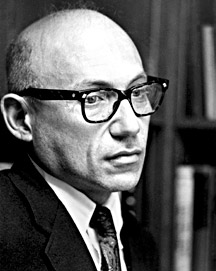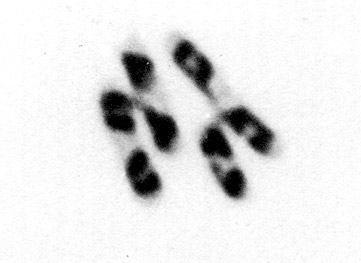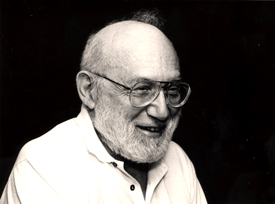Discovering Genetic Recombination in Bacteria: Prelude to Modern Molecular Genetics

Lederberg, Joshua
In 1946 Joshua Lederberg (1925-2008) showed that bacteria can exchange genes when they reproduce, much like plants and animals. With this discovery, scientists began using bacteria as models for studying how genes function in higher organisms. Lederberg's finding helped to launch the field of molecular biology and laid the foundation for today's biotechnology and genetic approach to medicine. It also had far-reaching implications for understanding how bacteria evolve, and, for example, acquire antibiotic resistance. In 1958, at the age of 33, Lederberg received the Nobel Prize for his discovery, shared with Edward L. Tatum and George W. Beadle.
As Lederberg was finishing his undergraduate degree at Columbia University in 1944, Rockefeller's Oswald Avery published the landmark paper demonstrating that DNA is the genetic material—a substance that could transform certain uninfectious pneumonia bacteria into ones that could cause infection. This discovery "ignited" Columbia's zoology department, Lederberg later recalled. Scientists at the time believed that bacterial cells always reproduced asexually, creating genetically identical progeny when they divided. So Lederberg wondered how DNA could be transferred from one bacterium to another. In 1946 he took a leave from medical school to pursue experiments on bacterial genetics at Yale University with geneticist Edward Tatum (1909-1975). Using x-rays to create mutations in the bread mold Neurospora, Tatum and George Beadle (1903-1989) had recently provided evidence to support the one-gene, one-enzyme hypothesis.
Lederberg studied a strain of E. coli called K-12, which is capable of synthesizing all the nutrients it needs to survive. Using x-rays, he created two mutant strains, each lacking the ability to make different nutrients, but each capable of making what the other one required (methionine and biotin in one strain, proline and threonine in the other). First he grew the two types together in media that provided the missing nutrients. Then he spread them on an agar plate without any added nutrients. Lederberg found that about one bacterium in 10 million was now able to grow into a colony. This could only happen if genes had been transferred from some bacteria to others, creating organisms with the full complement of genes. Lederberg called this process of genetic recombination conjugation. It was later shown by others that genes are exchanged between bacteria through a bridge, or pilus, that connects two cells.
Several years later Norton Zinder (1928- ), working as a graduate student in Lederberg's laboratory at the University of Wisconsin, discovered that genetic material can be transferred from viruses to bacteria when they are infected by the viruses, a process called transduction. This finding laid the groundwork for the idea that genes can be inserted into cells, a concept essential to recombinant DNA technology.
In addition to continuing research in genetics, Lederberg's scientific pursuits included exobiology, and he was influential in creating a role for biological research at the National Aeronautics and Space Administration (NASA). His experience with NASA missions to Mars led Lederberg to pioneer the use of computers in biomedical research. Among many contributions, he created with others the program DENDRAL, an early expert system for analyzing biological data.

Transmission of genetic information between two E. coli bacteria occurs during a process known as conjugation. Courtesy of Dr. Joshua Lederberg
Joshua Lederberg enrolled at Columbia University in 1941, and took time away from his undergraduate studies in 1943 to attend the U.S. Navy's V-12 accelerated medical training program and serve as a hospital corpsman in the clinical pathology laboratory at St. Albans Naval Hospital on Long Island. He received his bachelor's degree from Columbia College (1944) and his PhD from Yale University (1947). He joined the faculty of the University of Wisconsin, Madison, in 1947, where, a decade later, he helped found the department of genetics. In 1958 he became the first chair of the new department of medical genetics at Stanford University's School of Medicine. Lederberg began a 30-year affiliation with Rockefeller when he became the University's fifth president in 1978. As president, he recruited world-class faculty, brought young scientists to campus by initiating the University Fellows Program, and constructed a major new research building. On his retirement as president in 1990, Lederberg returned to research as University Professor Emeritus, the Raymond and Beverly Sackler Foundation Scholar, and head of the Laboratory of Molecular Genetics and Informatics.

Lederberg, Joshua
Throughout his career, Lederberg took important advisory roles in government, serving as scientific counselor to nine U.S. presidential administrations and other world leaders on issues ranging from cancer and emerging infectious diseases to space exploration and biological weapons disarmament. He was co-chairman of the Carnegie Commission on Science, Technology and Government; chairman of the Congressional Technology Assessment Advisory Council; and chairman of the New York Academy of Sciences. He also was a member of the U.S. Defense Science Board and a director of the Council on Foreign Relations. Keenly aware of the need for public understanding of science, Lederberg wrote a weekly column for The Washington Post for several years.
In addition to the Nobel Prize and the Medal of Freedom (2006), the nation's highest civil award, Lederberg received many honors, including the National Medal of Science (1989). He was elected a member of the U.S. National Academy of Sciences (1957), Foreign Member of the Royal Society of London (1979), and a fellow of the American Academy of Arts and Sciences (1982). Among his honorary degrees was one conferred on Lederberg by The Rockefeller University (1999). The author of more than 300 scientific and policy-related articles, Lederberg also was the editor of several books, including Papers in Microbial Genetics: Bacteria and Bacterial Viruses (1951), Emerging Infections: Microbial Threats to Health in the United States (1992), and Biological Weapons: Limiting the Threat (1999).
Selected Publications
Lederberg J and Tatum EL. Gene recombination in Escherichia coli. Nature, 1946, 158:558
Zinder ND and Lederberg J. Genetic exchange in Salmonella. J Bacteriol, 1952, 64: 679-699
Further Reading
Ratliff F. Haldan Keffer Hartline (December 22, 1903-March 18, 1983): A Biographical Memoir. Washington, DC: U.S. National Academy of Sciences, 1990, 59: 196-213
Miller WH, Ratliff F, and Hartline HK, How cells receive stimuli. Scientific American, 1961, 215(3): 222-238
Links
Profiles in Science: National Library of Medicine, The Joshua Lederberg Papers
http://profiles.nlm.nih.gov/BB/
The Nobel Prize in Physiology or Medicine, 1958
http://nobelprize.org/nobel_prizes/medicine/laureates/1958/index.html
